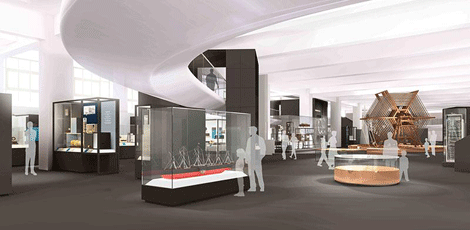
The face of communication has changed through amazing design and engineering – something that the Science Museum is showcasing in its new exhibit, Information Age
This October the London Science Museum will launch the first permanent gallery in the UK dedicated to the history of information and communication technologies.
Featuring more than 800 unique objects from the Science Museum collections and state-of-the-art interactive displays, ‘Information Age: Six Networks That Changed Our World‘ will bring to life the dramatic personal stories of those whose lives were changed by each new wave of technology.
From the design of the first transatlantic telegraph cable that connected Europe and North America in minutes rather than weeks, to the advanced computing power of the modern smartphone, Information Age will look at the huge impact of developments in communication technology have had on all our lives.
//www.youtube.com/embed/GYMTvdZBqp4
“As the single largest gallery inside the Science Museum, Information Age is one of our most ambitious projects ever”, said Science Museum director Ian Blatchford.
“Combining our world beating communications and computing collections with the latest digital technology and interactive experiences, this gallery will reinvigorate the heart of the Museum.”
Within each network visitors will discover many remarkable objects and stories, including:
– Thomson’s original galvanometer used to receive the first telegraph messages sent across the Atlantic between President Buchanan and Queen Victoria in 1858
– The original Marconi radio transmitter that made the first public broadcast in 1922 with the famous words ‘This is 2LO calling’ – announcing the arrival of the BBC and the birth of British broadcasting
– The intimate oral histories of women who operated our telephone exchanges until the introduction of the automatic dial
– Two of the world’s fastest supercomputers in the 1960s, the Russian BESM-6 and the American CDC 6600, and how computing became the front line of the Cold War
– The development of two generations of satellite communication technology told through the first worldwide TV broadcast starring the Beatles in 1967 and the crucial role of GPS satellites first used to help coalition forces navigate the desert during the first Gulf War
– The NeXT cube, the original machine used by Sir Tim Berners-Lee to design the World Wide Web in 1989 and start a new age of instant access to information
Information Age opens 25 October, and like the majority of the UK’s superb museums, is free to visit.






